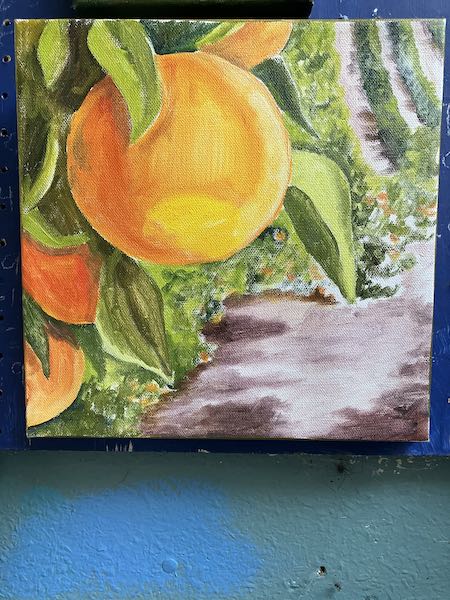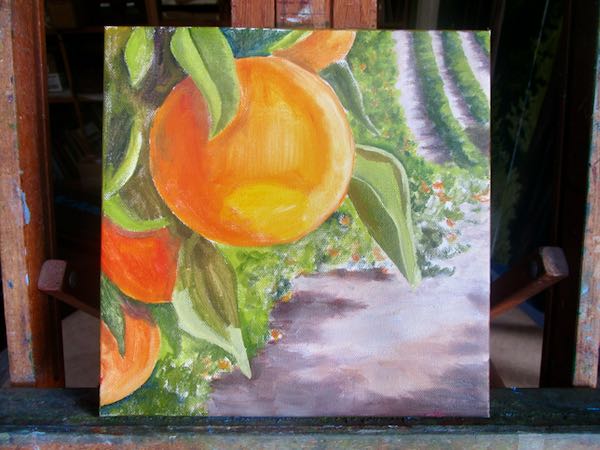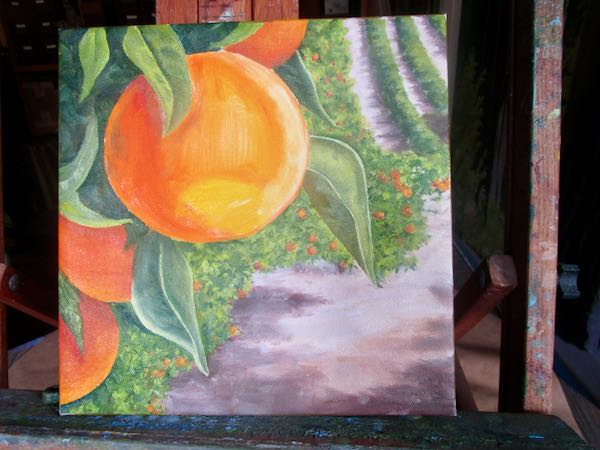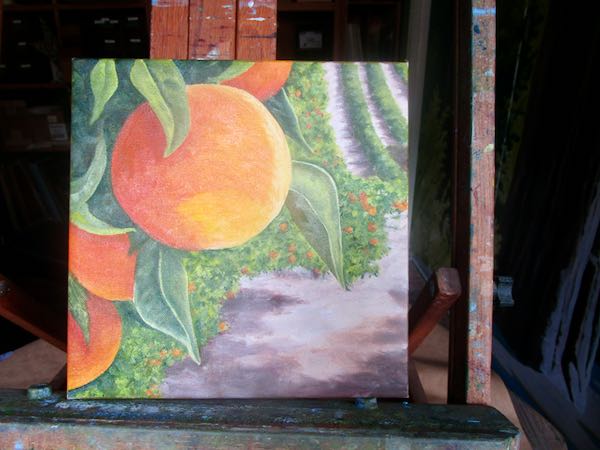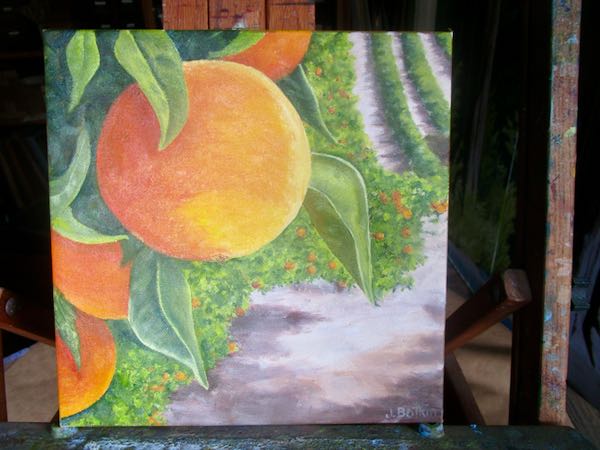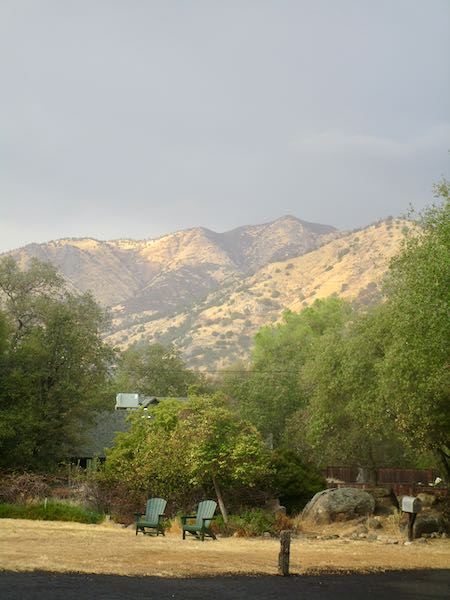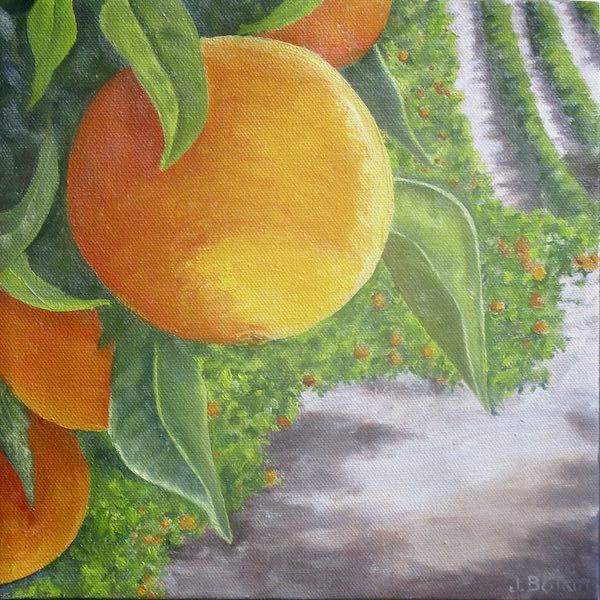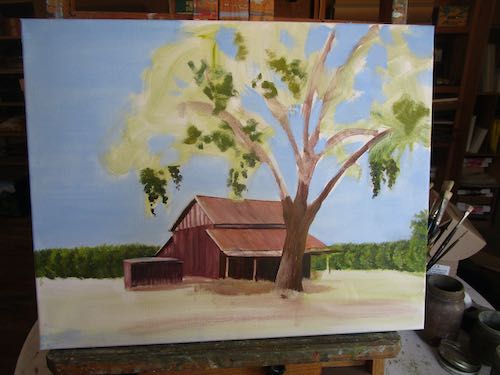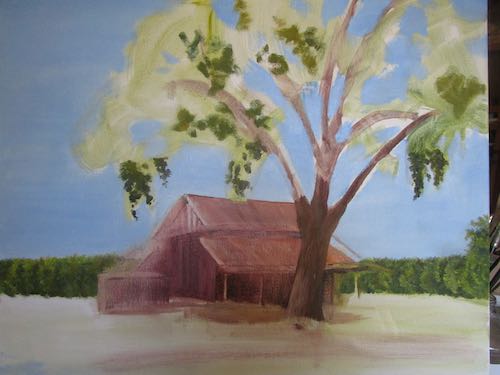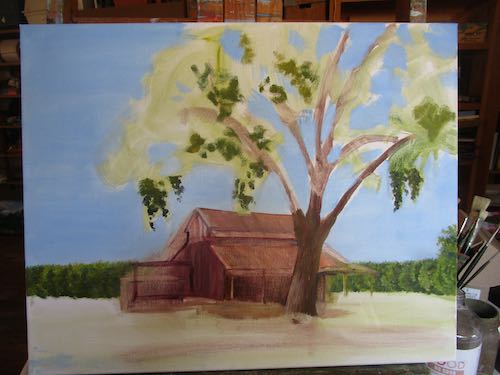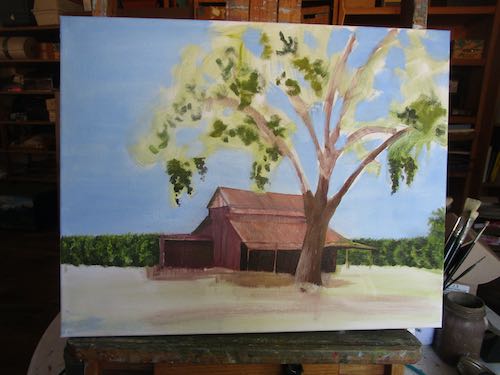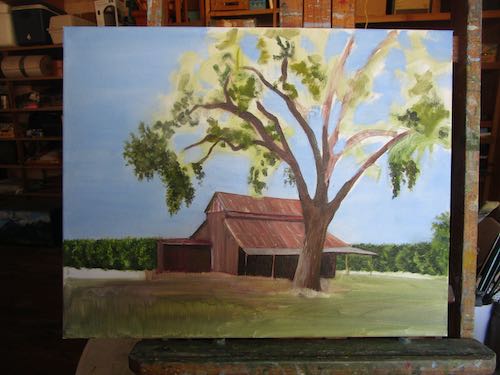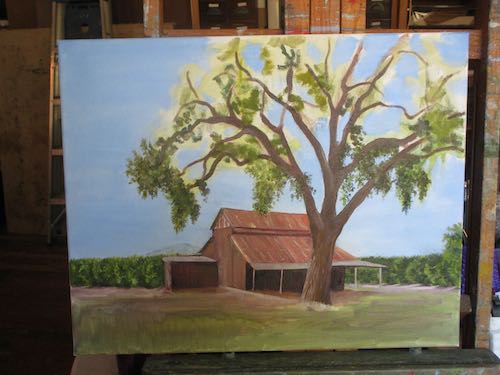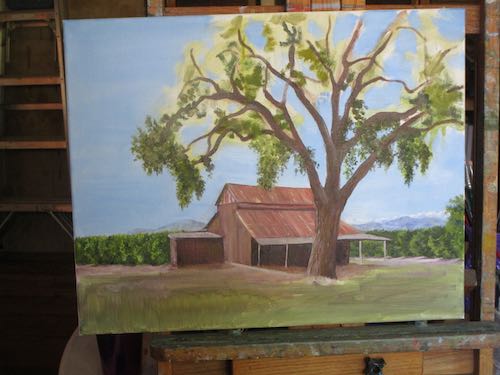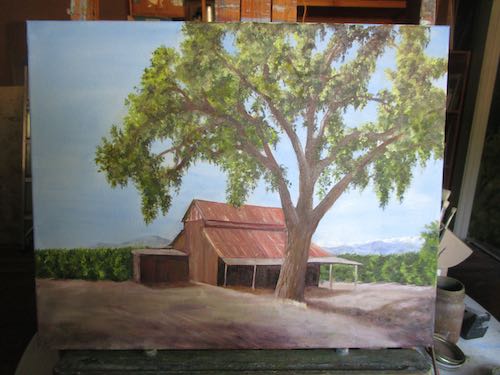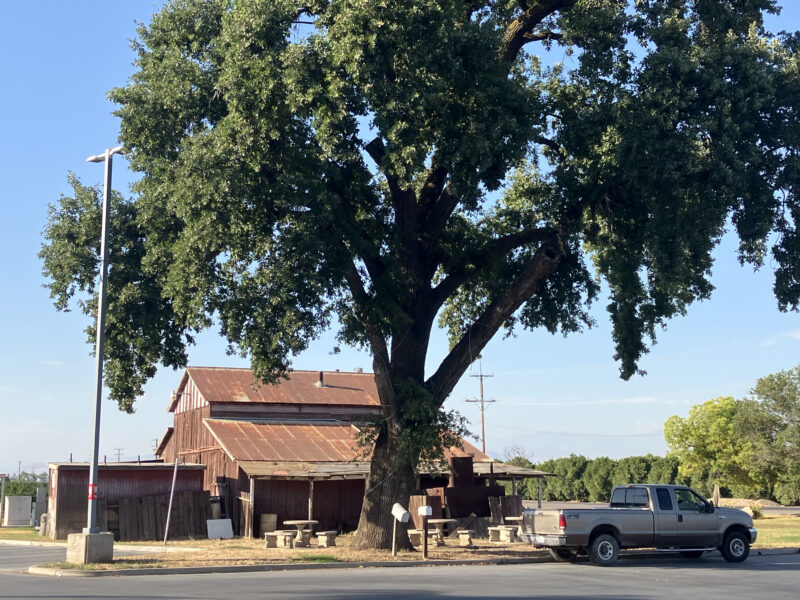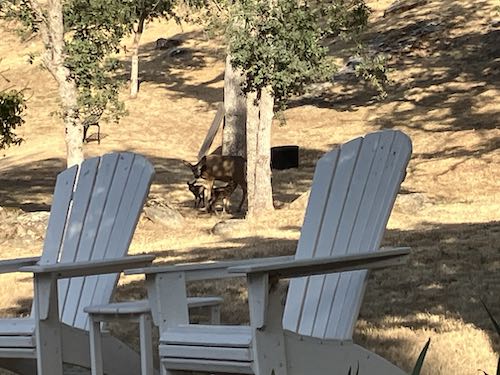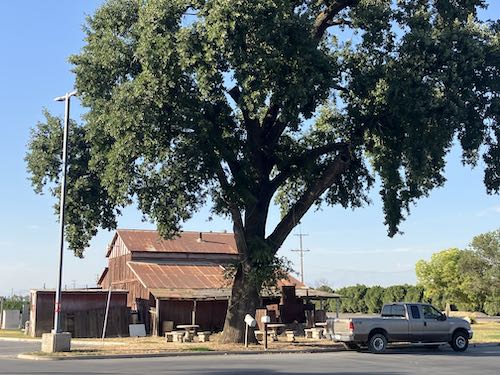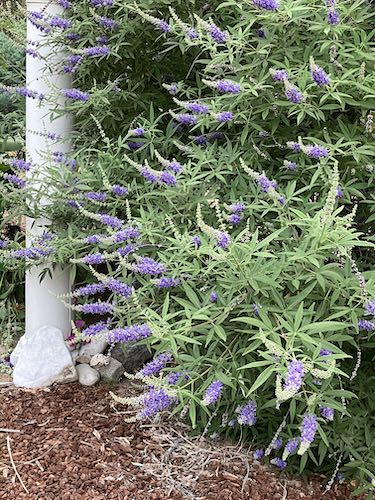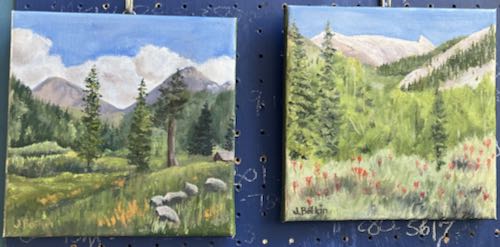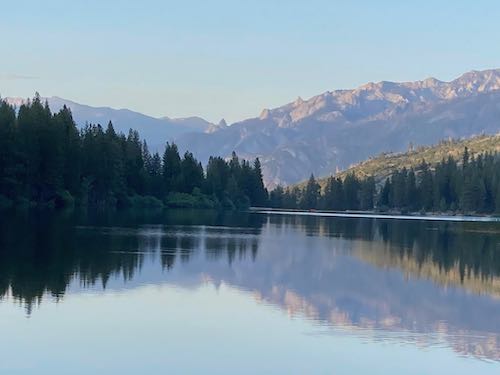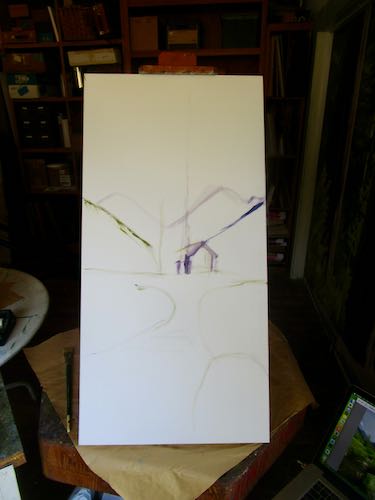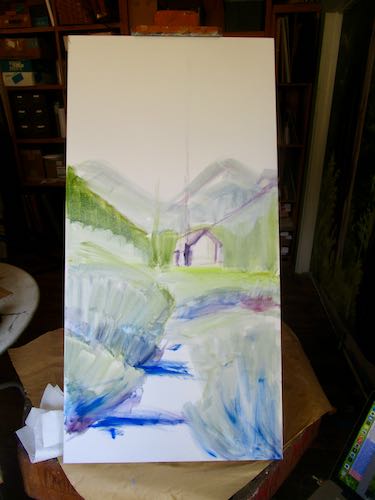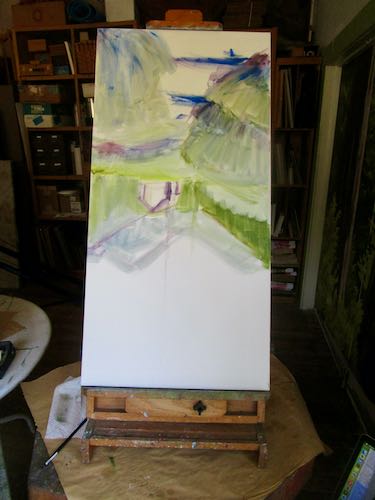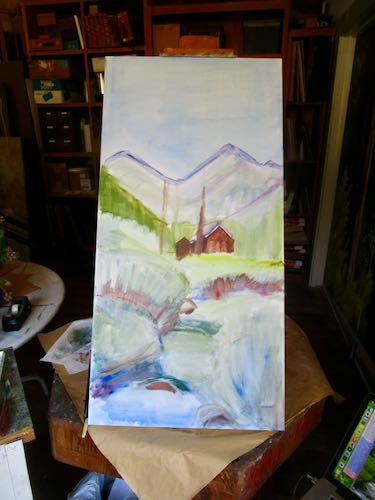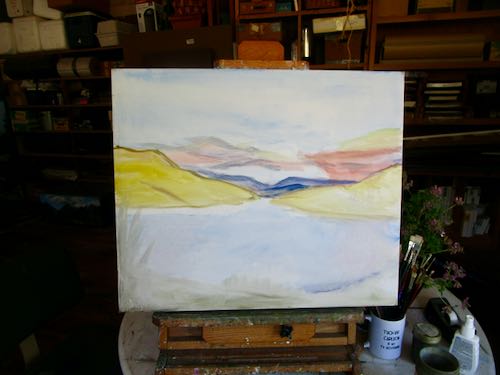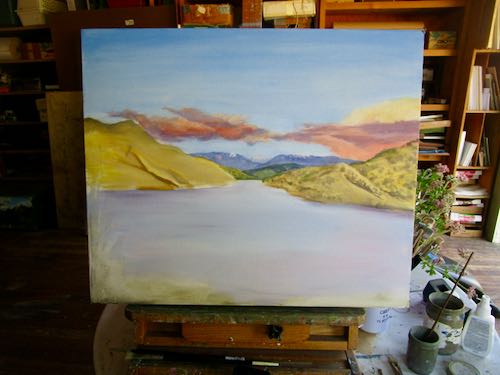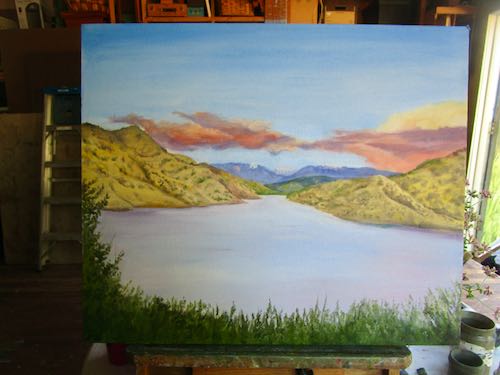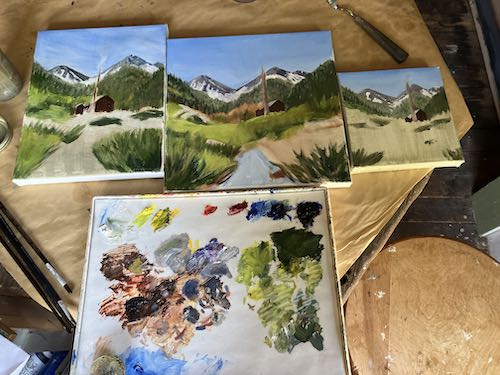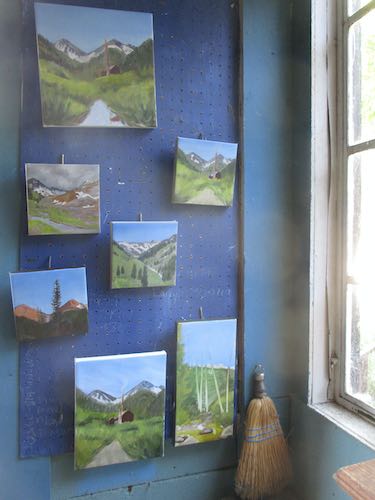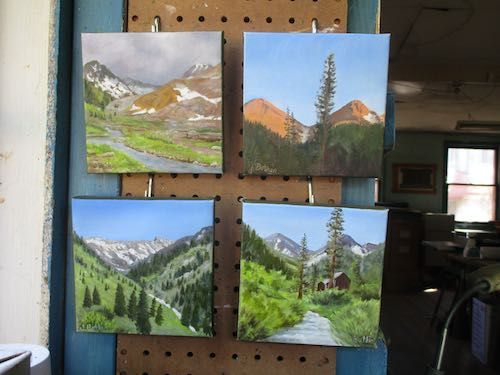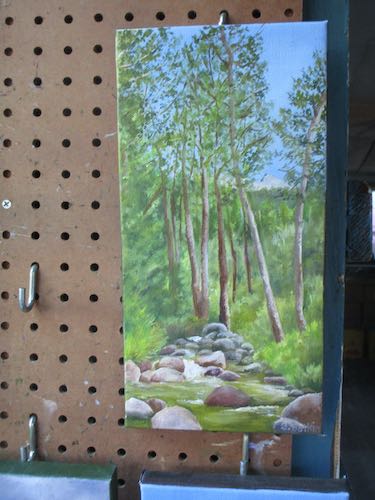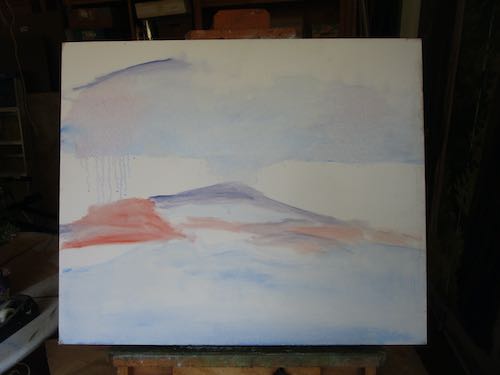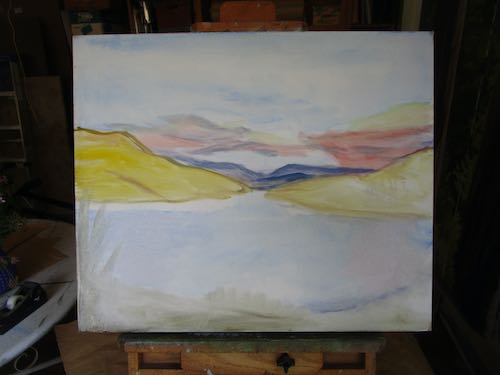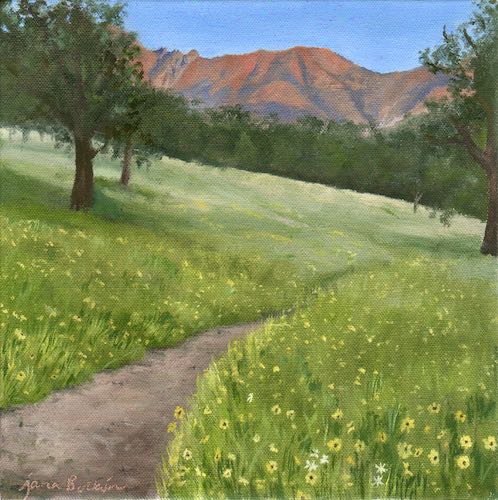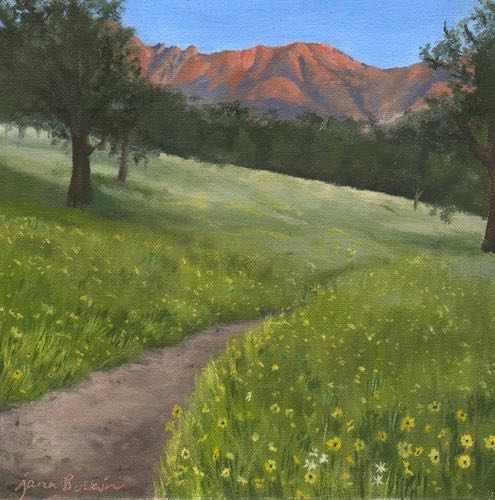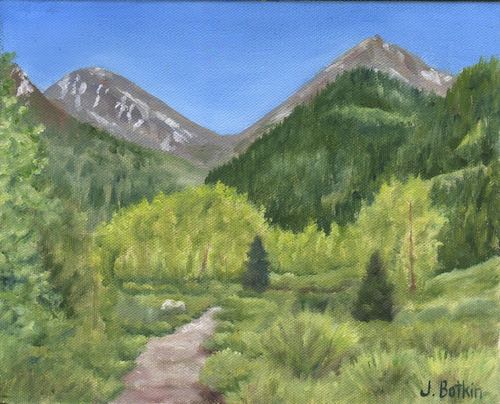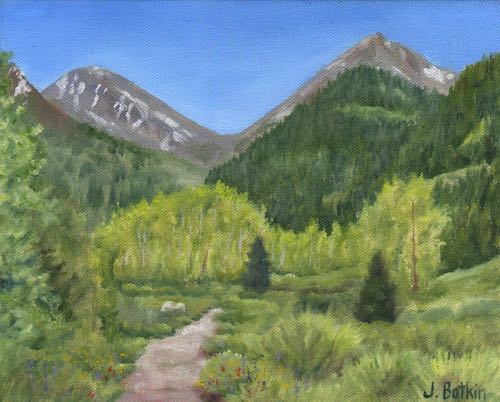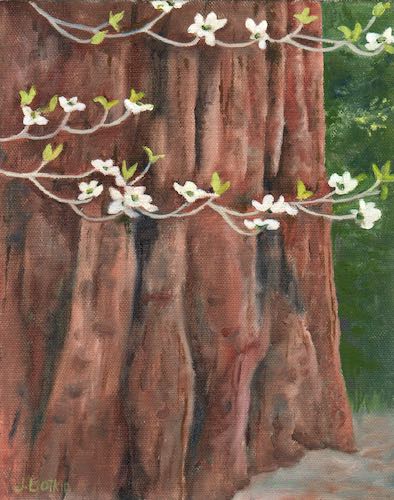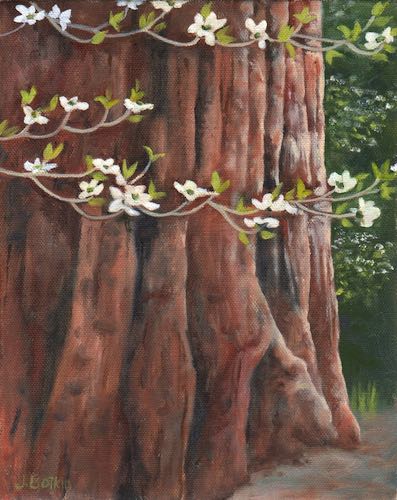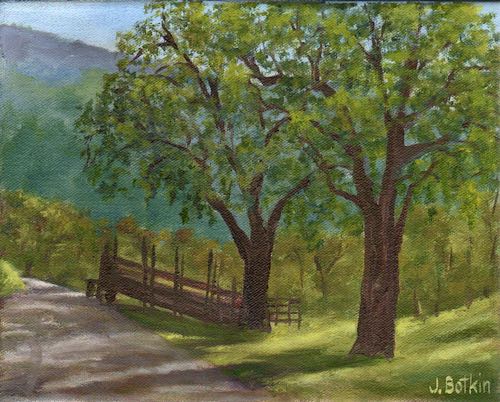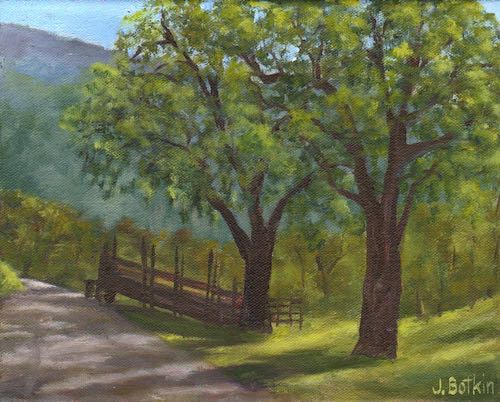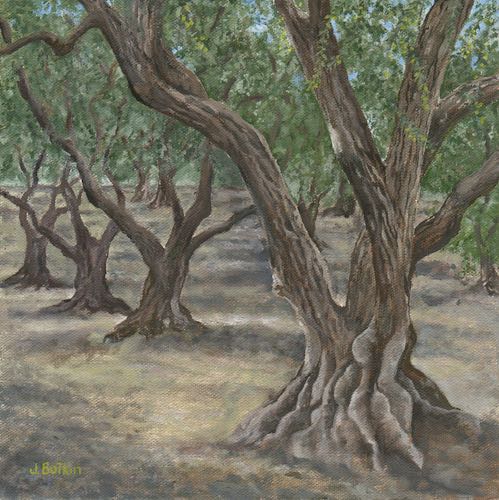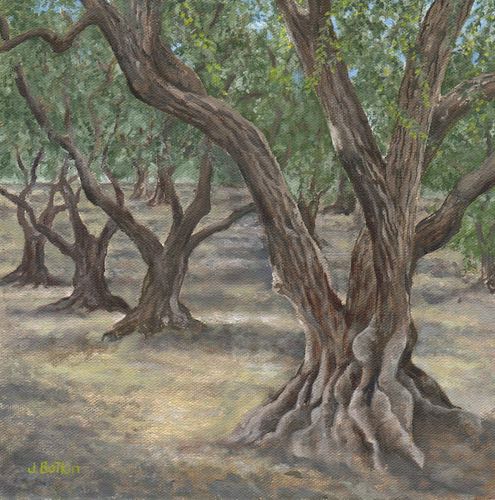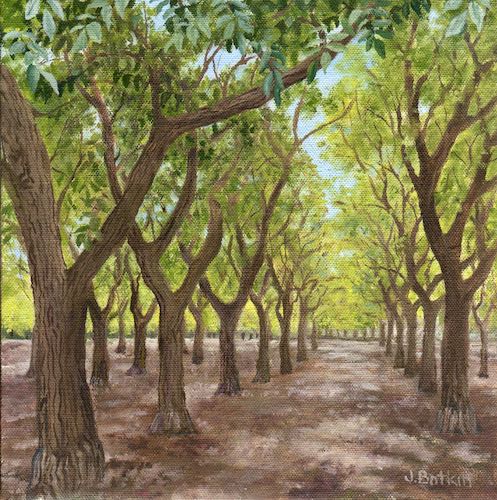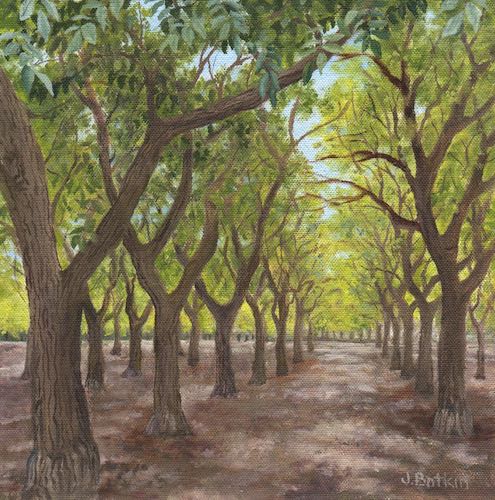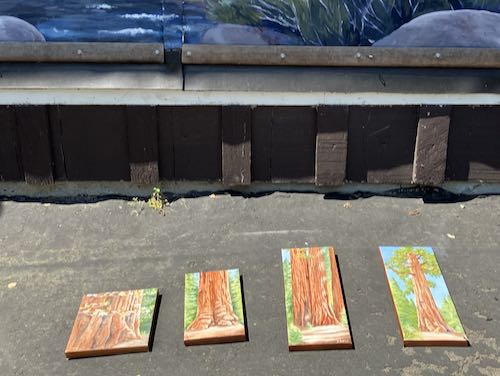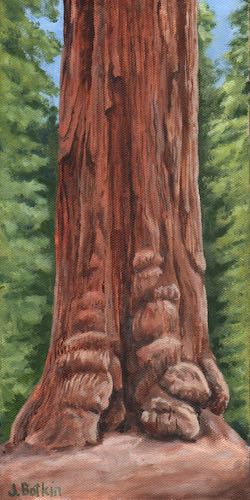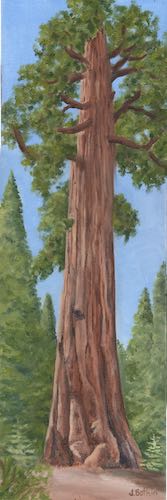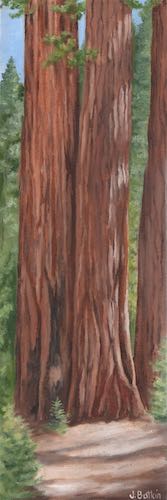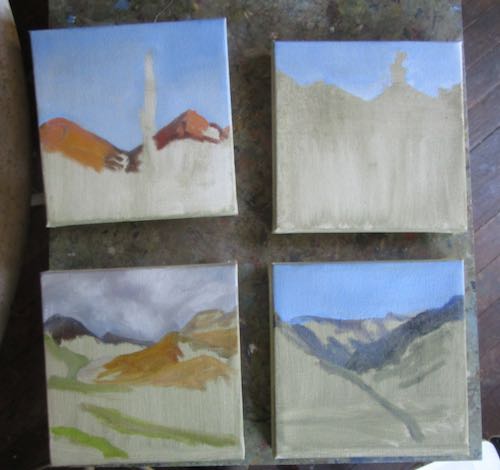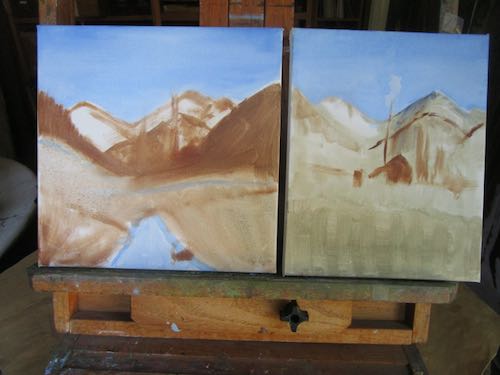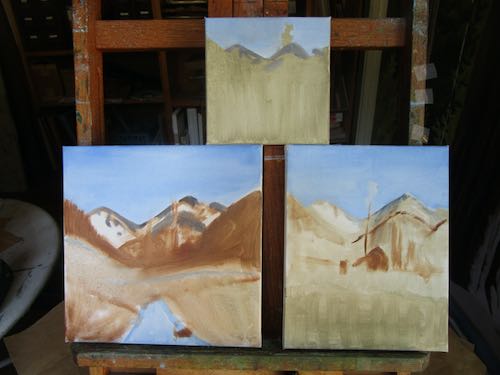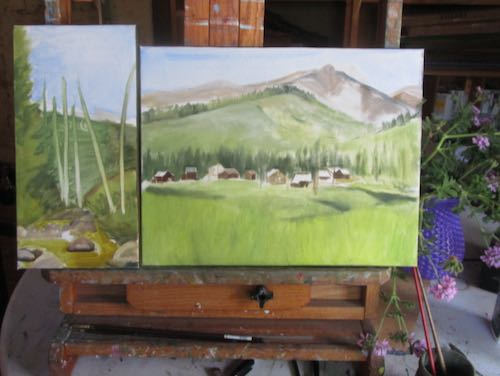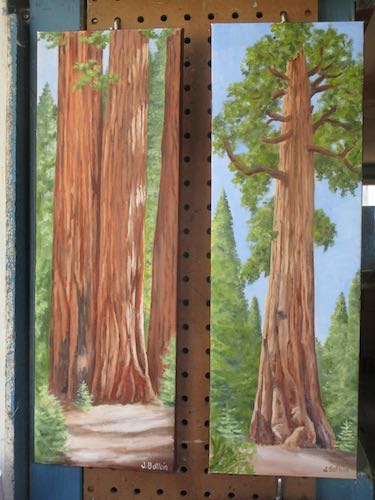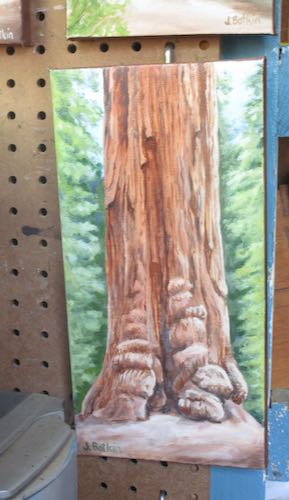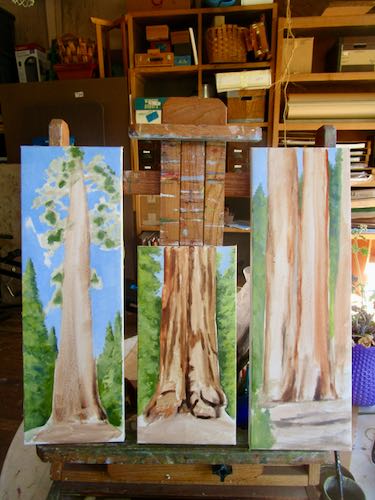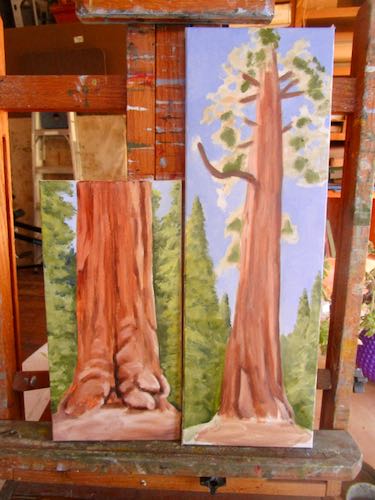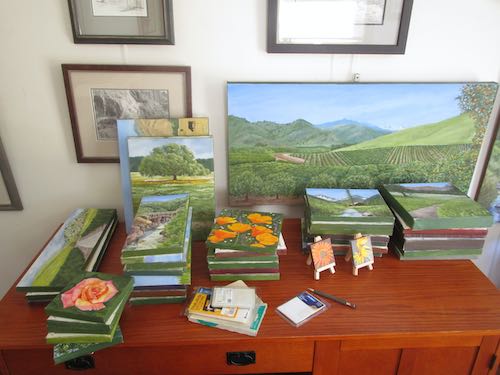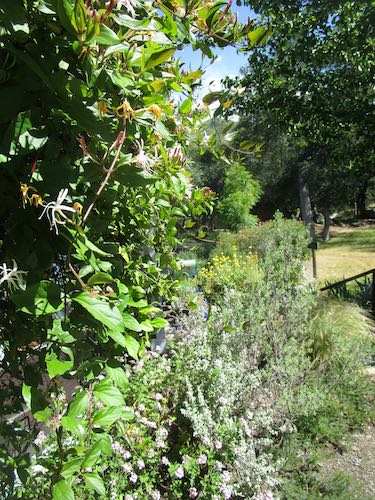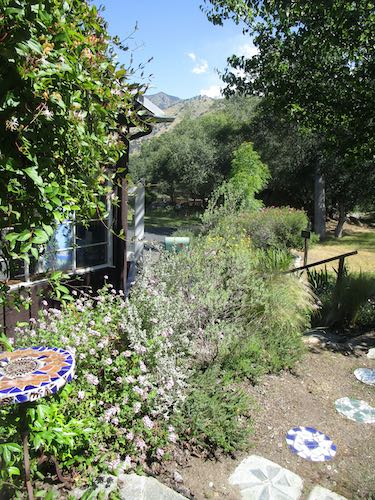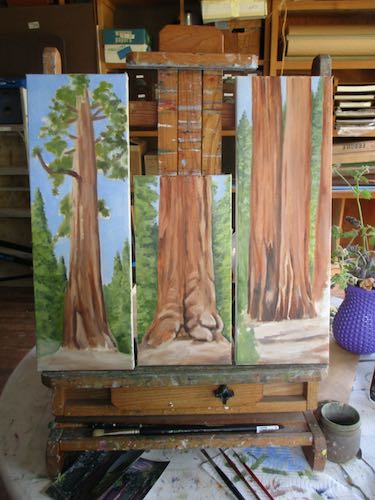At The Four-Way, right next to the Chevron station, there is a classic red barn with an enormous Valley oak tree, quercus lobata. It’s just part of the landscape, and one day while I was getting gas, I realized that this barn could just tumble, or the excess pavement near the tree could prevent it from getting the water it requires and BOOM, gone-zo. So, I took a photo to paint from, realizing there would need to be some severe editing and a liberal application of artistic license.
I started painting it one morning when I was a bit short on time but eager to get rolling. A friend stopped by to visit and kept me company while I started. I felt pretty optimistic about the painting by the end of the session.
Then I looked at this photo and realized the barn’s proportions were completely whackadoodle. So, I erased the worst parts.
Then I drew them in correctly. (How/why did I skip this step initially?? Never mind about having a friend hanging out. . . I used to be able to talk and draw.)
Back on track. . .
I realized that the orange trees needed to be different shades of green from the oak, so I mixed new greens and fixed up that grove.
Then I started working on the tree.
There was too much sky, and it needed hills and mountains.
Those clumps of leaves seemed to take forever.
It was a good day painting, and when I finished, I sat across from it with my critical hat on (metaphorically speaking because I wasn’t actually wearing a hat), I made a list of about 10 things to correct or add.
Want to see the photo that I snapped while I was getting gas?
You can see that severe editing was required to turn it back into a real countrified scene. And you can probably see about 90 things that I can do to make it be a better painting.
